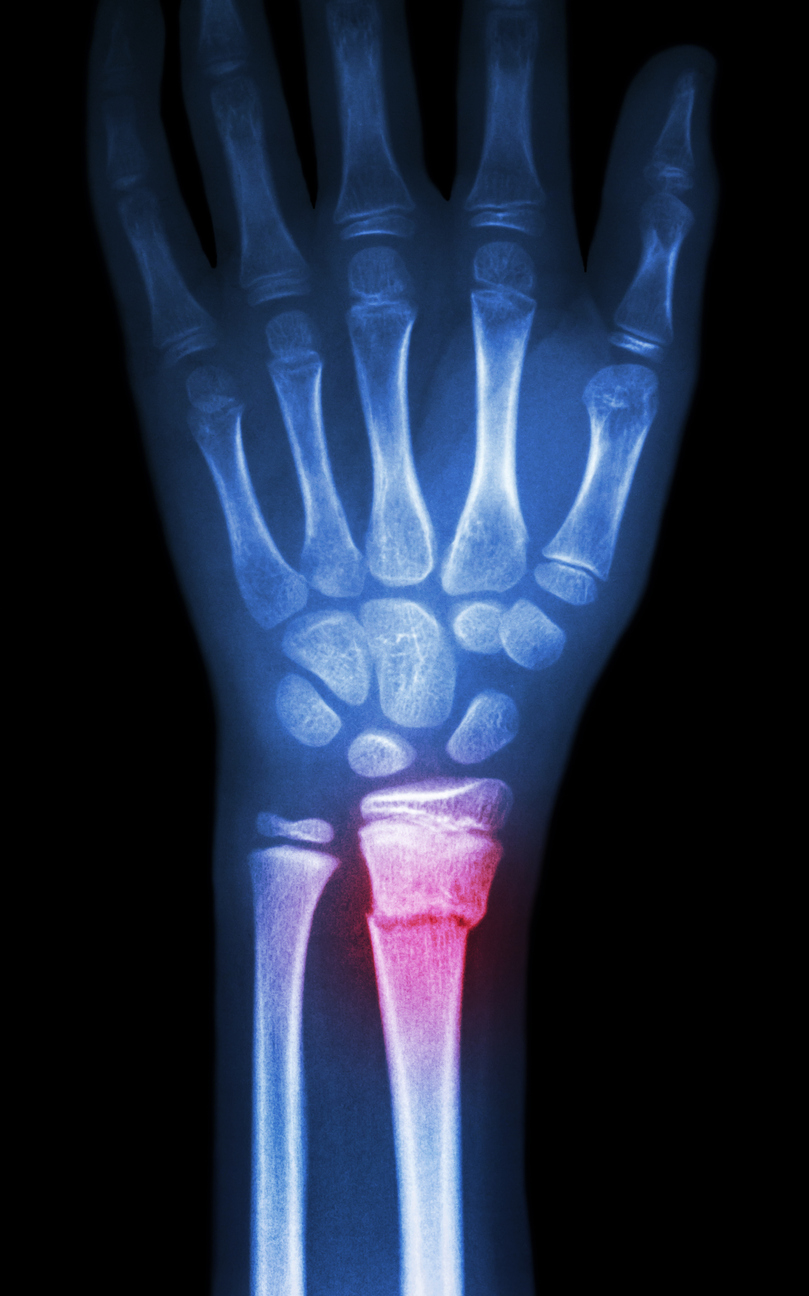
Wrist fractures are common and usually happen if you put your hands out to protect yourself when you trip or fall. Treatment for a wrist fracture can vary depending on the severity and the type of fracture. An orthopedic surgeon will be able to recommend the appropriate treatment to ensure a successful recovery from a wrist fracture.
A broken wrist usually causes immediate pain, swelling, and tenderness, and there may be bruising or discoloration to the affected area. In some cases, there may also be an obvious deformity. If you experience severe pain, have an open fracture (where the bone breaks the skin), if the wrist area is deformed or numb, or if the fingers are no longer pink, you should seek immediate medical treatment.
Types of Fractures
Distal Radius Fracture
The wrist is made up of two forearm bones called the radius and ulna, the radius is the larger of the two. A distal radius fracture is a break near the wrist (distal) end of the radius bone, where it is particularly vulnerable. Sometimes, the ulna bone in the forearm is also broken, called a distal ulna fracture.
A distal radius is the most common type of wrist fracture and often results from a fall on an outstretched arm. There are different ways the distal radius can break, and it is important to classify the type of fracture in order to treat it effectively. Some distal radial fractures, such as those that extend to the wrist joint, or a fracture that breaks the skin, can be difficult to treat.
Scaphoid Fracture
The scaphoid is one of the carpal bones that form two rows of small round bones in the wrist, located near the base of the thumb. Scaphoid fractures are the second-most common type of wrist fracture, but they can be difficult to identify and treat. They often occur due to trauma, such as when a person uses an outstretched hand in an attempt to break a fall, but can also result from injuries during sports and auto accidents.
Treatment can vary, and the closer the break is to the thumb, the greater the chance that nonsurgical measures, such as using a cast, will work effectively. The healing process becomes more difficult the farther the break is from the thumb because the area does not receive a good supply of blood, which is essential for healing. Surgery may also be necessary.
Less Common Wrist Fractures
A Barton’s Fracture is a distal radius fracture with the addition of a dislocation in the radiocarpal (wrist) joint. A Barton’s fracture often requires surgery to fix.
A Chauffer’s (Radial Styloid) Fracture is when the radial styloid (the bulge at the end of the radius bone near the base of the thumb) gets fractured. It is usually caused by a direct blow to the radius and often requires surgery.
An Ulnar Styloid Fracture is when the bulge at the end of the ulna bone, known as the styloid, gets fractured. The ulnar styloid is the visible bulge on the outside of the wrist. This fracture often occurs in conjunction with a distal radius fracture as the result of a fall and may require surgery.
If you have concerns about a wrist injury, seek evaluation and treatment from an orthopedic specialist, as delaying treatment can hinder your recovery and cause long-term problems.
Treatment
Treatment for wrist fractures depends on the severity and location of the fracture and whether the bones have moved during the break and are no longer aligned. The main goal of treatment is to align the fractured bones to allow new bone formation and accurate healing. Minor fractures (ones where the bones are not misaligned) are typically treated with non-surgical methods including immobilization, such as wearing a cast or splint until the bone heals, and with rest and anti-inflammatory medications.
For more serious and complex fractures, surgery is often required to realign the bones to ensure they heal correctly. Surgery using surgical-grade pins and screws may be necessary to hold fractured bones together during the healing process, followed by some type of immobilization and hand therapy as the bone heals. If a bone has been crushed or severely damaged, a bone graft may be required to fill any gaps.
Orthopedic Hand And Wrist Care In North Dakota
At The Bone & Joint Center, our board-certified and fellowship-trained orthopedic surgeons are skilled in the diagnosis, treatment, and rehabilitation of common and complex conditions affecting the hand and wrist.
To find out more information about the orthopedic hand and wrist issues we treat, visit us today. You can make an appointment by calling (701) 946-7400 / (866) 900-8650. You can also request an appointment online. We look forward to serving you!

